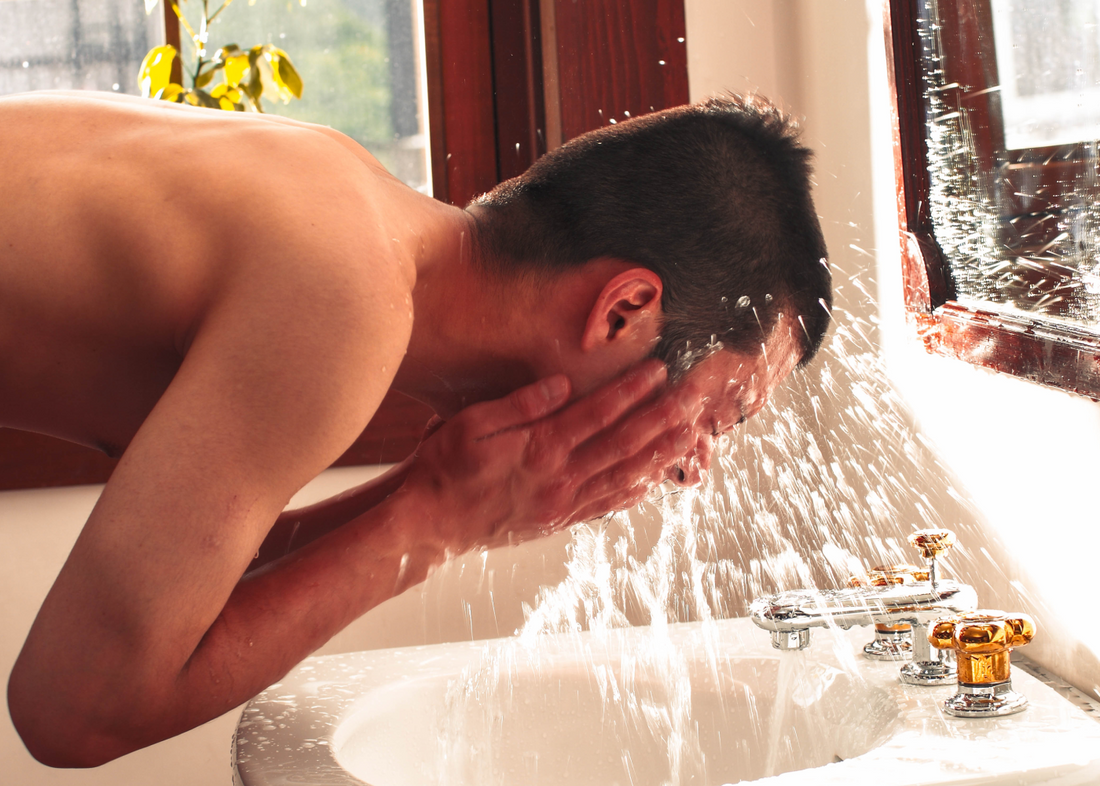
Here's How to Shave with Acne-Prone Skin
The only thing worse than having acne-prone skin is shaving acne-prone skin: It’s painful, it’s messy and it’s unfortunately something a whole lot of us have to deal with — studies indicate that between 40 and 55 percent of people between the ages of 20 and 40 suffer from breakouts. Shaving acne-prone skin doesn’t have to be such a hassle, though. According to dermatologist Shari Lipner and skincare expert Allison Gallo, the secret to effortlessly shaving acne-prone skin is simply preparing your face before shaving, using the right products and utilizing proper shaving technique. Here’s what that means.
Step #1: Prep That Face
First things first, Lipner recommends hopping into a hot shower to open up your pores and wash away dirt, grime and dead skin cells. Essentially, you want to remove anything that might create friction — which is what causes razor burn, irritation and potentially even more acne — when you slide the razor across your face. “Taking a hot shower before shaving also softens the hairs,” Lipner adds. This is another plus, since the softer your hairs are, the less they’ll pull when you go to shave. It’s also worth considering an exfoliating prep scrub, since they help push dead skin out of the way so the razor can glide more smoothly. On top of that, exfoliating lifts the hairs. Think about it: If your hairs are lying flat against your face when you shave, the razor is going to tug on them (which is extra painful when experiencing a breakout), rather than slicing neatly through them. Keep in mind, however, that it’s best to exfoliate lightly when dealing with acne-prone skin to avoid causing excess irritation.
Step #2: Pick the Right Products
Once you’ve showered and exfoliated, apply a shave cream, which will act like a slippery barrier between the razor and your skin, meaning less friction and less damage to your face. “Those with acne-prone skin should use a cushion-y shave product that provides extra protection and keeps the skin hydrated,” Gallo explains. And don’t be afraid to really lube up: When you don’t apply enough cream, you end up using pressure to get a closer shave, because the blade isn’t gliding across your face like it should. That pressure is one of the biggest causes of irritation and redness, which can quickly turn into breakouts when you have acne-prone skin. For those who have thick facial hair on top of the acne-prone skin, applying a beard oil before the regular shaving foam can also make a world of difference. This extra lubrication will allow you to use even less pressure while shaving, which as we mentioned above, is vital to shaving a face full of acne. As far as razors go, a dull blade can exacerbate some of the unwanted effects mentioned above, because older, duller blades require additional pressure to shave your stubble, and more pressure equals more irritation. So, be sure to use a fresh blade as often as possible.
Step #3: Be Gentle
“Shave gently to avoid causing nicks when shaving over acne,” Lipner explains. While this might sound obvious, one of the simplest ways to avoid the pain of shaving with acne-prone skin is to shave with the grain — that is, to shave in the direction that your hair is growing (as a general, more simplified rule, you want to shave with downward strokes on your face and upward strokes on your lower neck). When you shave against the grain, the hair is trimmed so short — and left with such a pointed tip — that it’s far easier for it to get embedded in the skin, which is what causes razor bumps, ingrown hairs and (you guessed it!) more acne. Once your face is completely smooth, follow up your shave with a soothing moisturizer to calm and hydrate the skin.
Step #4: Visit Your Dermatologist
At the end of the day, the best way to shave acne-prone skin is to deal with your acne — and that means paying your dermatologist a visit. Don’t worry: They won’t bite.
Check out some of our shaving and face products for acne to help with your grooming routine!
